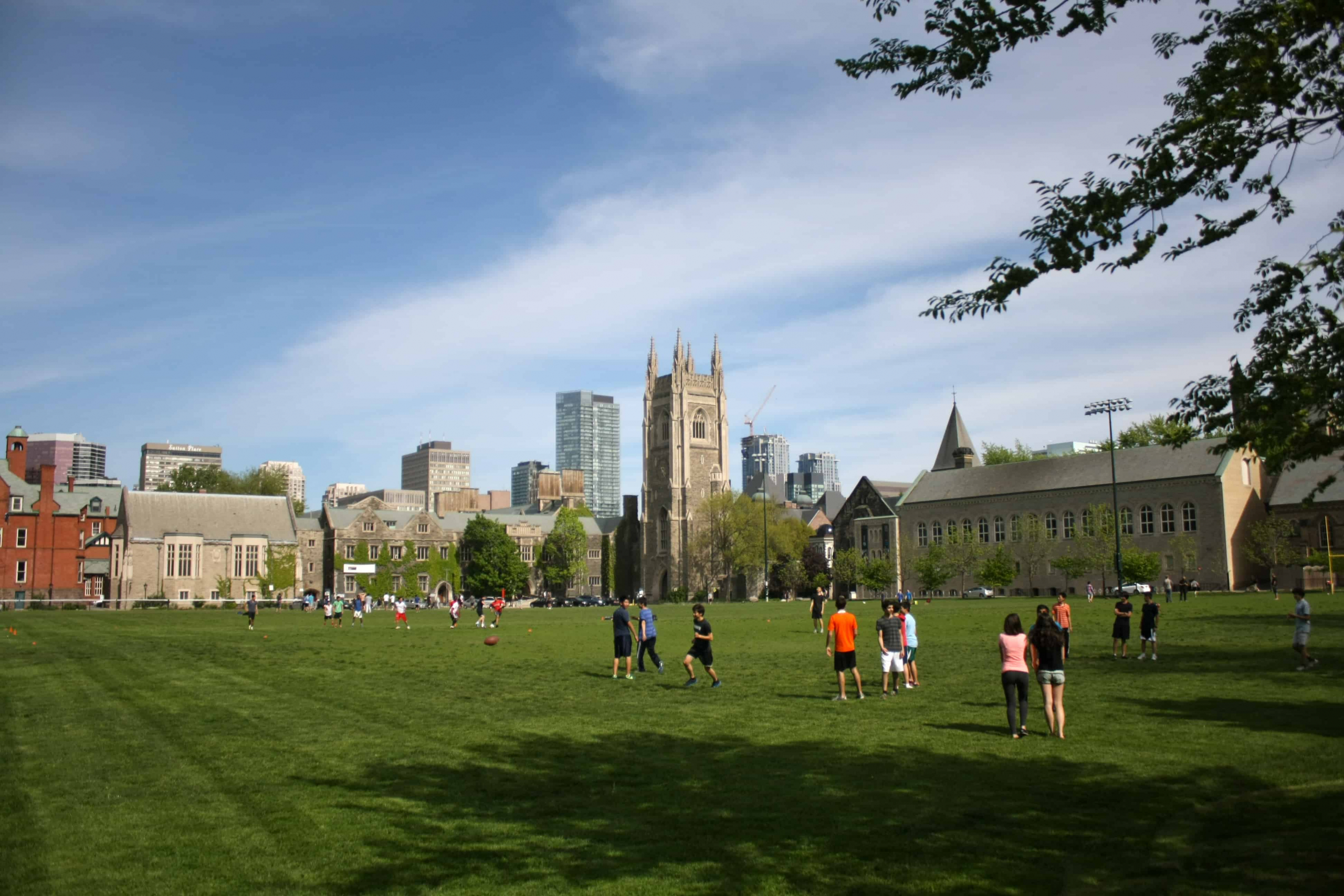You have probably noticed that a rather distinctive feature of our campus is missing, one that has contributed to the construction of U of T’s urban signature over the centuries. The once green field just south of Hoskin Avenue — most commonly known as Back Campus field — will soon be covered in artificial turf and reworked into two Olympic-sized field hockey pitches.
As the Faculty of Kinesiology and Physical Education reports, U of T’s Governing Council approved the $9.5 million project back in 2012, after extensive debate. The initiative was initially motivated by the 2015 Pan Am games, which are set to take place here in Toronto.
While U of T’s involvement in one of the largest international multi-sport events will certainly place the university on the global stage as a major athletic hub, I think a student perspective is also crucial at this juncture.
With its multivalent utility, the disputed green field has embodied public life on campus and is a significant contribution to Toronto’s green infrastructure. Whether you were a professional or amateur athlete, a reader, or someone who wants to pass time with a game of Frisbee, you belonged on that field — its various purposes included aesthetic pleasure, physical activity, and public life.
An artificial field hockey pitch undoubtedly has its advantages, from its ability to host multiple sporting activities to its consistent economical returns. However, the nature of the project inevitably raises an issue of spatial inclusivity.
One of the most compelling aspects of any public space — particularly within the urban context — is that it is, by nature, an inclusive space. Public spaces produce and reproduce a life of their own, a qualitative urban experience that many seem to take for granted. This kind of accessibility, among other factors, plays a vital role in creating the psychological benefits associated with public spaces.
There is a growing body of research addressing the relationship between public spaces (particularly green spaces) and physical and mental health. For instance, in Urban Ecology, Kevin Gaston reports that there is a positive correlation between subjective reports of health and available neighbourhood green space. Moreover, he shows that places where one is in direct contact with nature serve as “restoring places” for cognitive abilities and attention spans.
My purpose here is not to shed light on research findings in urban health, but to underscore an indispensable facet of the urban community of which we are a part: inclusive, green, and public spaces. Ultimately, I am not arguing for the return of the back campus field, as the Olympic fields are set to be completed in a few months. On the contrary, I am arguing for a deeper awareness of the need for more public and green spaces on campus —ones that could construct a legacy parallel to that of the long-gone green field.
As much as I may be thrilled for the upcoming Pan Am games, I am always reminded by what William H. Whyte wrote in The Exploding Metropolis: “There is no logic that can be superimposed on the city; people make it, and it is to them, not buildings, that we must fit our plans.” As U of T seeks to gentrify various parts of its campus grounds, there is an equally important need to consider investing in green, public spaces for the community.


